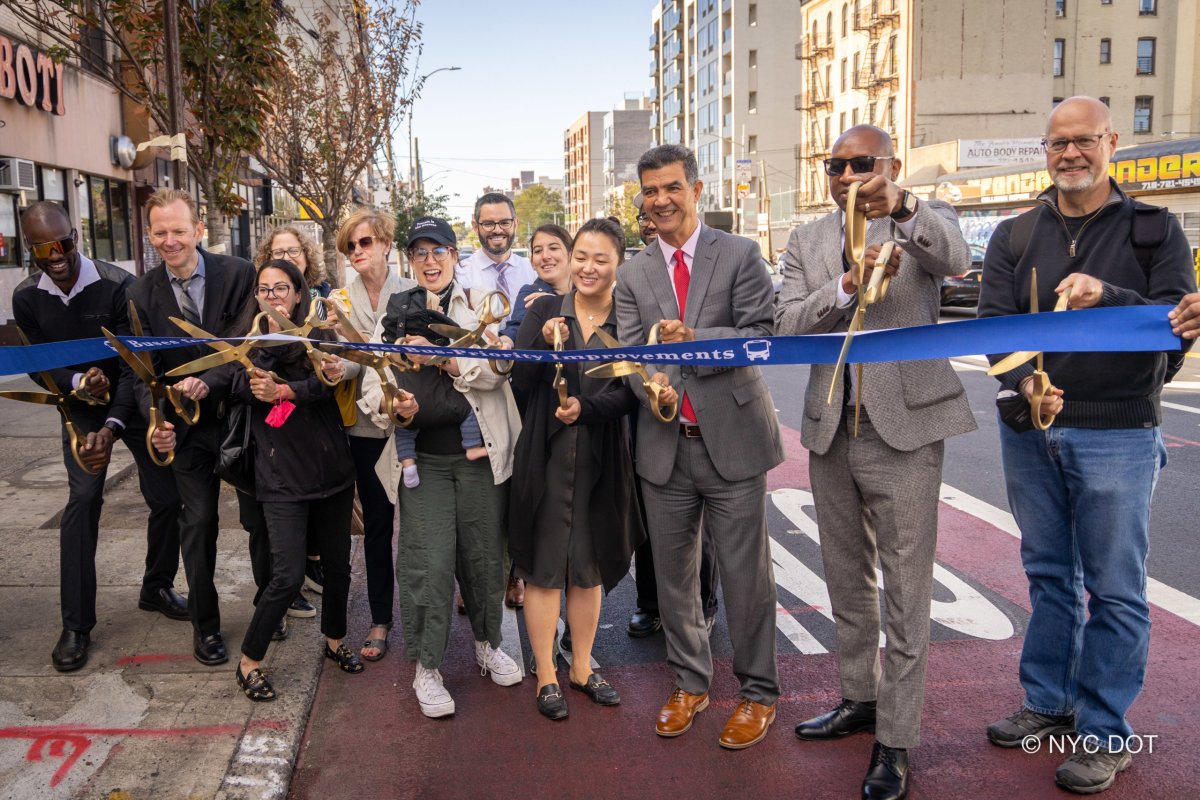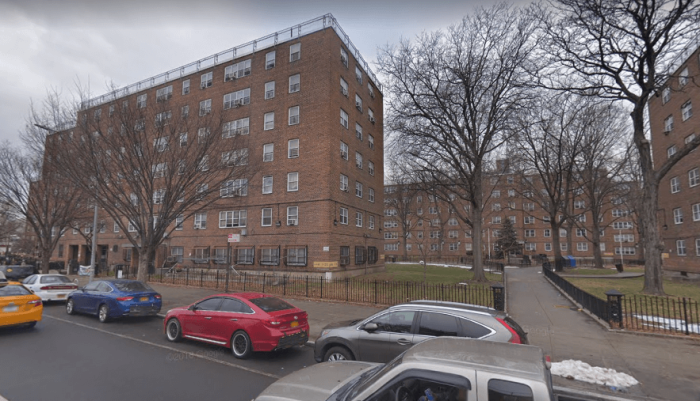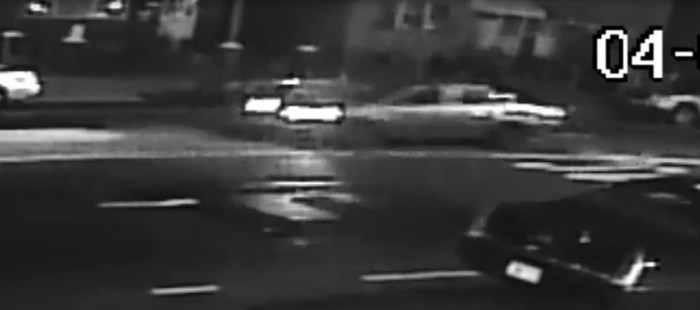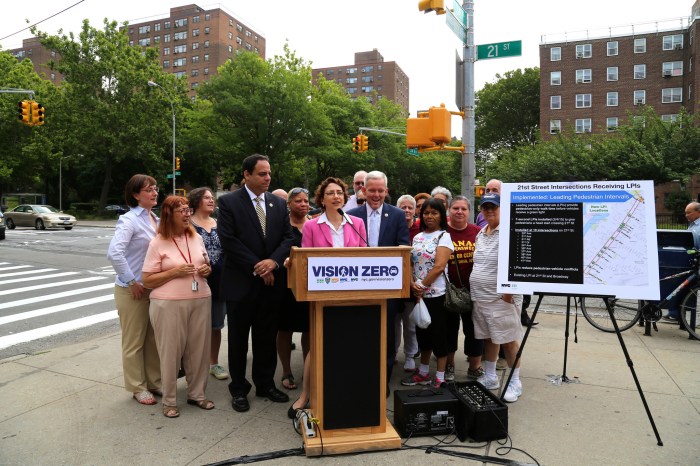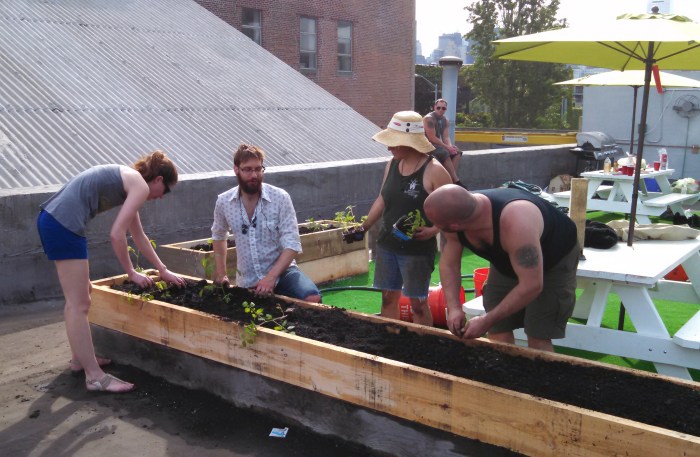Generations of Astoria and Long Island City residents have dealt with treacherous conditions on what is known locally as “The Speedway,” a nearly 2-mile-long stretch of 21st Street that motorists use to avoid paying the toll on the Triborough Bridge and make their way south to the Queensboro Bridge. On Sept. 29, city officials joined elected and community leaders from western Queens to cut the ribbon on new bus lanes along the corridor from Queens Plaza North to Hoyt Avenue North, which improves pedestrian safety and bus service that was slow and unreliable.
“These bus lanes are just another way we are making it faster to commute on Queens streets and across the city,” Mayor Eric Adams said in a statement. “Just as we did here, we will continue to work closely with the MTA and our community partners to get these projects done in a way that works for everyone.”
The new priority bus lanes carry 29,000 riders along three different routes — the Q66, Q69 and Q100 — which also serve the Queensbridge and Ravenswood Houses.
“Finding ways to improve bus service is key to providing faster, more reliable transit options for all of our borough’s residents, no matter what their ZIP code or socioeconomic status may be,” Queens Borough President Donovan Richards said. “The 21st Street Bus Priority Project will vastly improve bus service in western Queens, while also enhancing safety for all who use 21st Street.”
Richards commended the MTA and the DOT for implementing the “much-needed improvements” along the route.
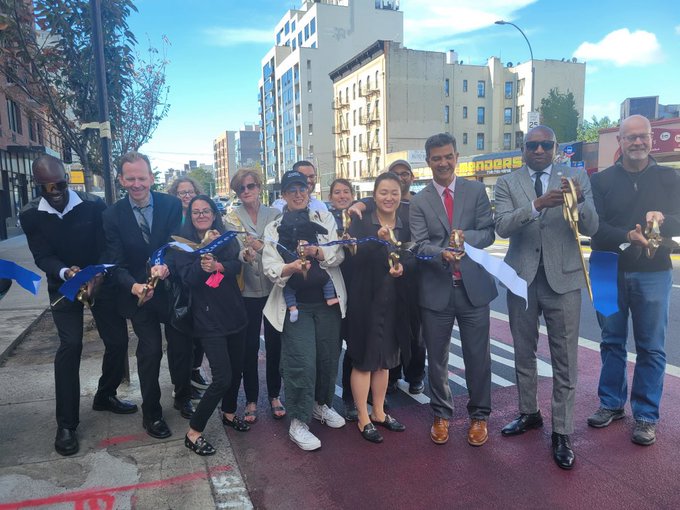
“The Adams administration is committed to equity in everything we do, and that includes our commitment to bus service that better serves the working-class New Yorkers who depend on it,” said DOT Commissioner Ydanis Rodriguez. “The changes to 21st Street will not only make bus service faster and more reliable to thousands of riders, but they will also help us make this street much safer, helping to meet our Vision Zero goals. The administration set ambitious goals in partnership with the MTA for speeding up public transit, and we’re working every day to deliver for New Yorkers.”
Rodriguez said the project added a suite of improvements DOT often employs during bus priority projects, such as the construction of pedestrian islands and left turn lanes, along with painted curb extensions.
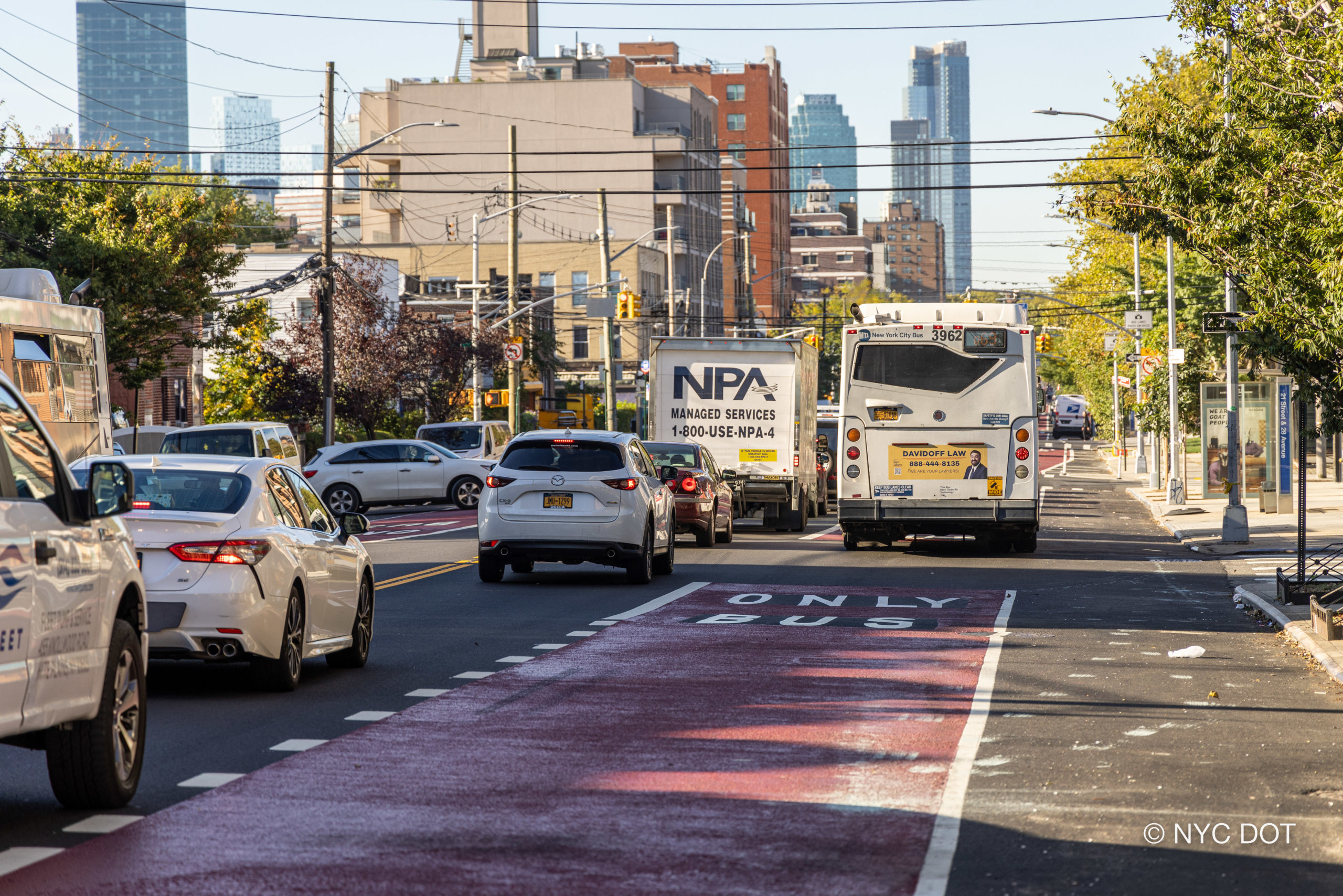
Councilwoman Tiffany Cabán said she was looking forward to working with the DOT to bring additional transportation infrastructure improvements to western Queen.
“With the urgency of the climate crisis before us, the city must ramp up efforts to improve the reliability, speed and safety of our public transportation systems so that New Yorkers can take advantage of lower-emissions modes of travel,” Cabán said. “I am proud that we’re doing just that in District 22. The redesign of the 21st Street Bus will not only speed up service for bus riders but will make our streets safer for pedestrians, cyclists and motorists alike.”
The DOT and MTA conducted robust public engagement over two years with dozens of stakeholders and community groups.
“We’re excited to see DOT and the MTA working so closely together on these additional bus lanes while engaging the community in Queens on the roll-out,” said Ken Podziba, president and CEO of Bike New York. “The enforcement and infrastructure improvements that are a part of this and others projects will not only speed bus times; they’ll also help eliminate the double-parking and aggressive driving that present a constant danger to pedestrians and cyclists in the city.”
Old Astoria Neighborhood Association President Richard Khuzami has concerns about increased traffic on ancillary streets like Astoria Park South and Vernon Boulevard.
“We are in favor of the bus lanes, but we were hoping they would only be in operation during rush hours,” he said. “We also hope the DOT and MTA are open to modifications once we see traffic return to normal levels following construction on the Queensboro Bridge and whatever impact that congestion pricing has on bridge and tunnel traffic in the future.”

